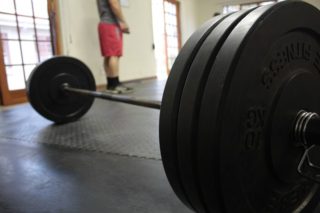Strength Training Workout Routine

Strength Training Workout Routine
A Strength training program is much different than a body building program. To configure a proper strength training routine, you need to understand how a muscle becomes stronger. If you fail to understand the physiology behind how to get stronger, you will not put together an optimal strength training program; the goal in this short article is to explain the differences between body building and strength training. Resistance training is how you will increase your strength and not be a bodybuilder unless you choice to part take in body building.
Body building workouts consists of performing reps of 6 to 12 and working the muscle until it fails. Bodybuilders intentionally try to hurt the muscle group they are working with the idea that when it heals it will become significantly stronger. Proper strength training routine takes a much different approach.
A good strength training plan should focus on how to make a muscle more efficient, not for breaking down a muscle; if your strength training program is focused on things such as “pump” or “burn”, you must change your strategy. Remember body building as “muscular” based and strength training as “nervous system” based. In a good strength training program, try to educate your nervous system to send stronger incentives to group muscle full time. Your strength training programs should be based on heavy weights and low repetition.
If you take a weight of 5 pounds and curl it, the nervous system barely works to contract your bicep muscle. If you take a 40 pound weight and curl it, your nervous system works harder. The heavier weights you choose, the less reps you can perform.
While doing strength training routines, you should range your reps between 2 to 5, but increase your sets to 6 to 10. This allows the brain enough practice to know it must make the muscle stronger. This will train your nervous system to become more effective and fire a strong impetus to the muscle repeatedly.
Training to failure is definitely body building. None of your sets in your strength training programs are ever to fail. Every time you train to fail you are teaching your nervous system to fail. You will be rewarded with weaker impulses that are sent to the muscle on the upcoming sets you perform. When you train to fail you are having to step back in your quest to gain strength. Obviously forced reps should be avoided.
When body builders are fighting for things like “pump” they are actually trying to use their muscles and need to keep rest at a minimum. While doing a strength training program your highest nerve impulses are sent to the muscle in each rep you do. Because of this you need to rest up to 5 minutes between each set.
Because your strength training session is not exploding your muscles, you experience very little soreness days after your workout. Because the muscles do not need to repair themselves, you can work out every muscle group more often than after a body building routine. A bodybuilder might work at every muscle group twice a week, you should be able to work every muscle group 3-4 times a week. If you are “practicing” lifts four times per week, you should get faster results than someone who lifts two times per week; Just make sure you don’t tear the muscle like a bodybuilder.
A quick summary of a good strength training. 1) 3-5 reps per set 2) 6-10 sets per exercise 3) 3-5 minutes of rest between sets 4) Never train to failure. 5) Never carry out forced labor reps. 6) Practice greater lifts 3-4 times per week. Check out the video example to the left of this article for a few examples of the amount of reps to do. Check some more examples of body building and strength training and see what works best for you here.
Leave a Reply